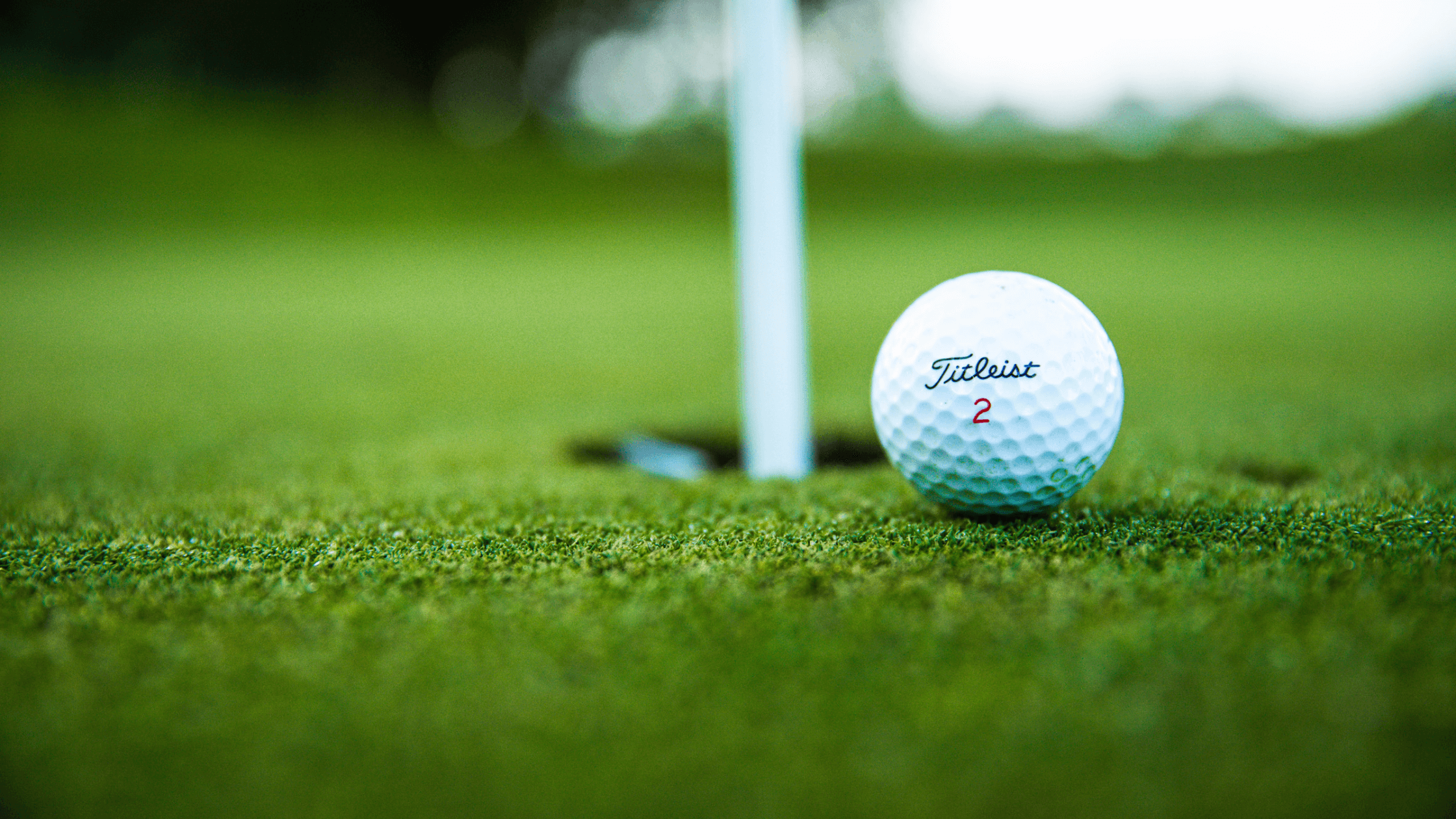The Masters Tournament Injuries: Top 5 Golf Injuries and How To Prevent Them

Licensed Physical Therapist, PT, DPT // Dry Needling Certified // Titleist Performance Institute Certified // Director of Player Development, EW Golf // EW Motion Therapy Homewood // EW Motion Therapy Trussville
The Masters Tournament is a major event in the world of professional golf. Every year, top players from all over the world are invited to the tournament to compete for the prestigious green jacket. But it can also be a cause for concern when it comes to golf injuries.
With the right treatment interventions, injuries do not have to be debilitating - physical therapy can often be an excellent treatment for golf injuries of any severity. Our golf team at EW Motion Therapy loves helping golfers like you heal from and prevent injuries. Even if you decide that our services do not fit your needs, it's important to be aware of the top 5 golf injuries, their causes, and how to prevent them. Knowing the signs and symptoms of each of these injuries, as well as preventive measures, can help you stay safe and healthy during any tournament.
Finding the right golf pro or swing coach for you is essential to succeeding in your game. Learn more about the different professionals here.
Top 5 golf injuries
1) Lower back pain
Lower back pain is one of the most common injuries experienced by golfers. It can be caused by poor form or overuse, such as spending long hours on the course or at the driving range. Golfers competing in the Masters Tournament face even greater risks due to their intense training regime, making low back pain a major concern.
The best way to prevent lower back pain is to ensure your golf swing is correct. An experienced golf pro or swing coach can help you identify any flaws in your technique and suggest exercises or stretches that can help improve your game. Additionally, regular breaks during a round of golf will help reduce stress on the lower back muscles and joints. If you experience any discomfort, it is recommended that you seek professional medical advice.
2) Wrist injuries
Golfers of all skill levels can experience wrist injuries, particularly pros during the Masters Tournament. During a round of golf, the wrists are subject to both repetitive motion and sudden jerks or twists, which can result in pain or injury. The most common injuries include tendonitis, carpal tunnel syndrome, and fractures.
Tendonitis is an inflammation of the tendons that connect your hand and arm muscles to your bones. It can be caused by gripping the club too tightly or improper technique when swinging. Symptoms include swelling, tenderness, and decreased range of motion in the wrist.
Carpal tunnel syndrome is also a common injury among golfers. This condition occurs when a nerve in your wrist becomes compressed or irritated, causing pain and numbness. To avoid this, make sure you take frequent breaks if necessary.
Fractures are another risk for golfers, particularly if they are using improper technique or equipment. This type of injury occurs when the wrist is overstretched or twisted beyond its normal limits. You can also incur a fracture from impact on a rock, roots, or firm turf, especially if you are playing on an unpredictable surface. If you experience severe pain or cannot move your wrist, seek medical attention immediately.
To reduce your risk of wrist injury while playing golf, make sure you are using proper technique and stretching before and after each round. If possible, consider seeing a swing coach or golf pro to help you identify areas where you may need improvement. Finally, remember to take care of your body off the course as well; yoga and regular stretching can help keep your muscles strong and supple, making them less prone to injury.
3) Elbow injuries
Elbow injuries are particularly common among golfers, especially those that have just started playing the game. Common elbow injuries include golfer’s elbow (medial epicondylitis) and lateral epicondylitis.
Golfer’s elbow, or medial epicondylitis, is a condition caused by inflammation of the muscles and tendons that are located around the elbow joint. It causes pain and tenderness on the inside of the elbow which can be aggravated by gripping activities, such as swinging a golf club. This can lead to pain, tenderness, and soreness in the area. To reduce the risk of golfer’s elbow, it’s important to use proper technique when swinging the club, focus on proper body alignment, and use good swing mechanics.
Lateral epicondylitis, more commonly known as “tennis elbow”, is an inflammation of the outer portion of the elbow that is caused by repetitive gripping activities. It can be especially problematic for golfers if they grip the club too tightly. To reduce the risk of tennis elbow, it’s important to use proper technique and grip when swinging the club. It’s also helpful to practice stretching exercises for the forearm muscles to help reduce tension in the area.
If you experience either of these elbow injuries while playing golf, it’s important to take a break from golfing and rest your arms. You can also try taking anti-inflammatory medications to reduce pain and swelling in the area. If you’re looking for golf near me, look for courses that offer lessons or clinics so that you can get expert advice from a qualified golf pro or swing coach on how to improve your technique and reduce your risk of injury.
4) Shoulder injuries
One of the most common injuries for golfers is shoulder pain, which can affect both amateur and professional players. Shoulder pain can be caused by many different factors, from overuse to improper swing mechanics. Players at the Masters Tournament can be especially susceptible to shoulder injuries due to the intense demands placed on the body during competition.
The most common type of shoulder injury for golfers is rotator cuff tendinitis, which occurs when the tendons that connect the muscles in the shoulder become inflamed. This inflammation can cause pain when swinging a golf club, especially with full swings. To prevent shoulder injuries, it's important to have proper technique and warm-up exercises before playing a round. Taking lessons from a local golf pro or swing coach can help ensure you have proper form.
It's also important to take breaks between rounds and stretches after playing to keep your muscles loose and avoid overuse injuries. Working on shoulder mobility exercises such as shoulder rolls, arm circles, and wall slides can help prevent shoulder pain while improving your game. If you're experiencing shoulder pain while playing golf, it's best to seek help from a doctor or physical therapist to get an accurate diagnosis and determine the best treatment plan for you.
5) Knee injuries
Knee injuries are among the most common injuries in golf, particularly for golfers. They can be caused by improper technique, overextending during a swing, or by a traumatic force such as a fall. For professional golfers competing at the Masters Tournament, knee injuries can mean the difference between a win or a loss.
The most common knee injury for golfers is a meniscus tear. This occurs when the cartilage cushioning your knee joint is damaged. Symptoms of a meniscus tear include pain, swelling, and difficulty extending your leg or straightening your knee. It is important to see a doctor right away if you think you have a meniscus tear.
Another common injury among golfers is an anterior cruciate ligament (ACL) tear. This occurs when the knee joint twists in a way that it is not meant to, often during a swing. Symptoms of an ACL tear include pain and swelling, and your knee may be unstable or “give out” while you walk. Treatment may involve physical therapy or even surgery.
To avoid knee injuries, it’s important to stay in shape and make sure you have proper technique when playing golf. Consider taking lessons from a swing coach or golf pro to improve your game and prevent injuries. Stretching and strengthening exercises can also help protect your knees from damage. Lastly, if you have any preexisting knee problems, take extra caution when playing and consider visiting a doctor for advice.
Golf is a sport enjoyed by many people around the world, but knee injuries can put a damper on anyone's game. To keep yourself safe and get back on the course as soon as possible, find a golf professional near you and use the tips above to protect your knees.
How can physical therapy help with golf injuries?
The Masters Tournament is a premier golf tournament that attracts some of the best professional golfers in the world. Unfortunately, injuries can take a toll on even the most experienced players. Implementing solutions like strengthening exercises, stretching, proper form, and the use of a swing coach or golf pro can help you stay healthy and playing for a lifetime.
If you are experiencing any of the injury symptoms we discussed, it’s important to seek help from an orthopedist or physical therapist. You can also look for golf courses near you that offer lessons and tips from golf pros. Regardless of your skill level, looking out for warning signs of injury can help you keep playing golf and stay injury free - this is what our golf team at EW Motion Therapy wants to help all our clients do. If you want to learn more about how our golf team can help you reach your goals, click the button below to download our answers to 20 frequently-asked questions.

